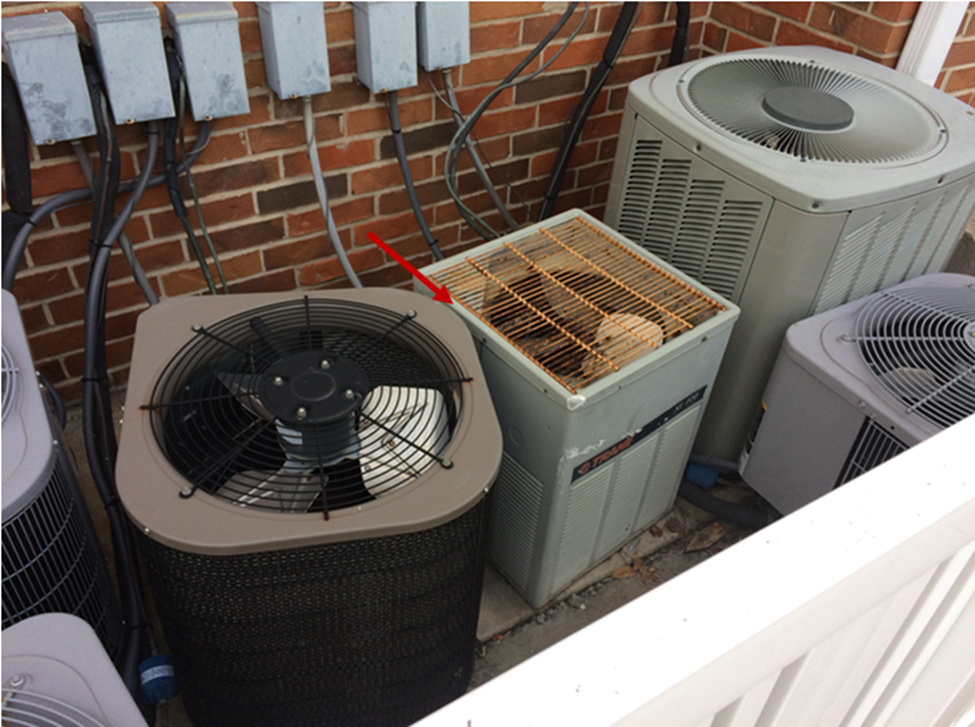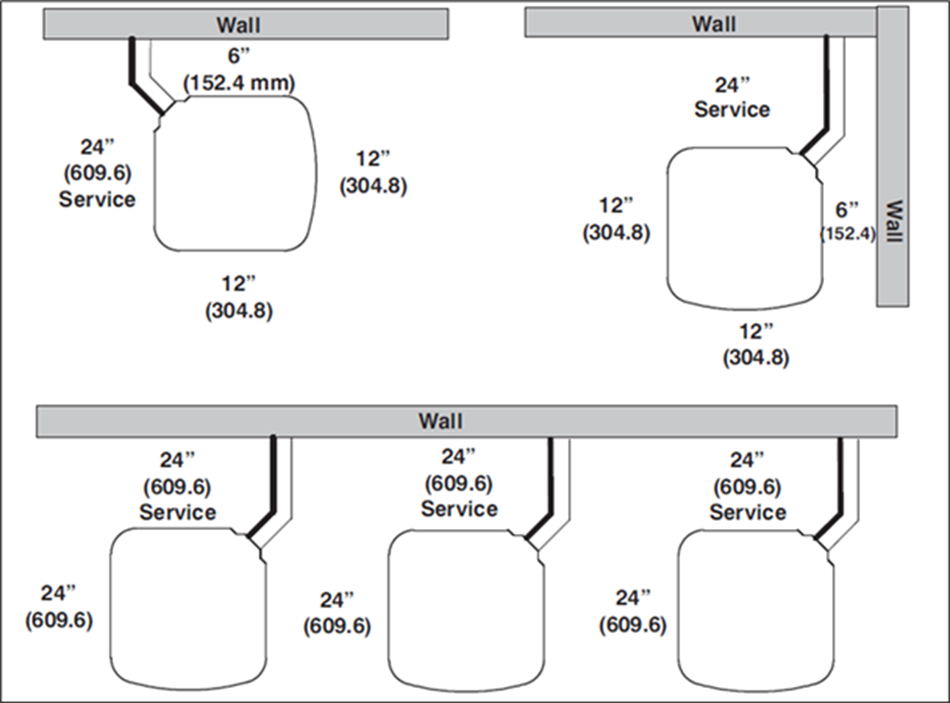
A CONDENSER & HEAT PUMP CLEARANCE REMINDER – IMPACT ON COOLING CAPACITY, EFFICIENCY, AND EQUIPMENT DURABILITY
The outdoor section for a central air conditioning (AC) unit and heat pump relies heavily on proper air circulation to function properly. The AC condenser fan pulls in ambient air, typically through one or more of the sides of the unit, through the condenser coil, absorbing the heat picked up at the evaporator coil inside, and expelling the heat through the top or one of the sides of the unit. Heat pumps, of course, reverse the cycle in the winter, pull heat from the outdoor air, and discharge that heat to the inside of the building. While we regularly discuss the airflow inside the building, through the air handlers/furnaces, coils, filters, and duct systems, airflow through the outdoor units is often ignored. For these units to work efficiently, there needs to be unobstructed airflow across the condenser and compressor of the outdoor unit. If the unit is placed too close to an obstruction, the airflow might be restricted – causing the working efficiency of the unit to be reduced.
This image is of a group of condensers on the side of an extended stay hotel where the rooms each have a small furnace and AC unit.

The single most common issue, which can be observed in this image, is that multiple units have been installed too close together. It’s clear the small cube Trane unit is one of six original units for this building. By observation and previous experience installing these Trane units, it’s obvious the original units were not installed in accordance with clearances required by the manufacturer’s installation instructions. The initial installation was too close to the wall with insufficient space between units. With each successive failure, the units were replaced with physically large condensers, each doomed for poor performance, inefficient operation, and premature failure because of their proximity to each other. Further compounding the problem, the property owners added a vinyl fence (restricting more airflow), probably to hide this unsightly mess. (Please note the electrical service access location for the original Trane unit as indicated by the red arrow.)
When was the last time you reviewed AC and heat pump clearances?
The diagram below is found in the installation instructions for Carrier BDP products. Other manufacturers have similar requirements, with several differences noted in the bullet points below.

Clearance by the numbers:
-
-
-
- All but one manufacturer requires 12” side clearance for each unit with a total of 24” between two units. Goodman requires 20” between units but does not allow 6” on one side, rather requires 10”. Trane does not allow 6” on any side.
- Some require 30” or 36” service clearance, while others allow as little as 18” for service.
- Lennox requires 30” service clearance on one side, one of the other three sides must have 3’ clearance, with 12” on one of the remaining sides, and 6” allowed on the last side.
- Plants, fences, and other obstructions must also be considered to ensure sufficient airflow to the units.
- In addition to proper clearance on each side, the unit needs enough room to circulate air in and out. If there is not enough clearance above the unit, you run the risk of putting extra stress on it. The minimum clearance to obstructions above units in most cases is 5’ or more.
- Please be mindful of placing a unit under large, confined decks where the air will recirculate, creating a condition where the entering air temperature continually increases over time, causing the unit to pull in warmer air and thus operate less efficiently. Use common sense and knowledge of the refrigeration cycle.
- York specifically identifies a minimum of 5’ of clearance from a dryer vent or condensing gas appliance vent.
- Contractors, please refer to the manufacturer’s installation instructions and leave them on-site as required by the code and the manufacturer.
- Homeowners, please consider these clearances in your landscaping plans and most importantly, maintain clearances as surrounding plants grow. For example, if you decide to have minimal clearance because you’re using a shrub to shield the unit, remember that shrubs grow, and 12 inches of clearance may quickly turn into 6 inches or less.
-
-
The clearance above and around the sides of the units can affect performance and longevity. Poor airflow at the condenser coil will result in high head pressures and temperatures, reducing cooling capacity, increasing operating cost, and drastically shortening the life of the compressor. That’s why it’s important to review installation instructions to ensure the units work properly.
– Dr. Energy

0 Comments